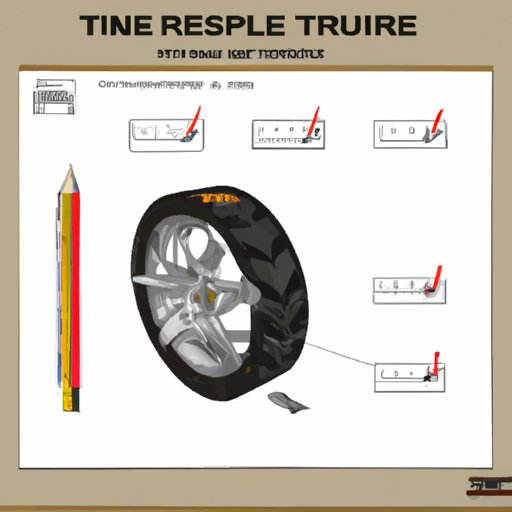
Understanding Tire Sizes: A Step-by-Step Guide
Have you ever been in a situation where you’re searching for new tires for your vehicle and you come across a string of numbers and letters that seem to be written in code? Trying to understand tire sizes can be confusing, especially if you’re not familiar with the different numbers and letters used. In this article, we’ll be providing a step-by-step guide to understanding tire sizes so that you can make an informed decision when purchasing new tires.
How to Read Tire Sizes:
Tire sizes are typically written in a format such as P215/65R15. These numbers and letters indicate the size of the tire, the type of tire, and the rim size. Here’s a breakdown of what each number and letter means:
– The ‘P’ indicates that this tire is for a passenger vehicle, while ‘LT’ stands for light truck.
– The number 215 indicates the width of the tire in millimeters, measured from sidewall to sidewall.
– The aspect ratio is the second set of numbers i.e 65 in our example and indicates the height of the tire’s sidewall as a percentage of the tire’s width.
– The ‘R’ stands for radial, meaning the tire has radial construction. ‘B’ indicates bias-ply construction.
– The number 15 refers to the diameter of the wheel, measured in inches.
Visual Aids:
To provide further clarity, take a look at this example:
IMAGE: (insert an image of a tire with all the letters and numbers indicated with arrows)
The Importance of Knowing Correct Tire Size:
Knowing the correct size of tire for your vehicle is crucial for your safety and the performance of your vehicle. An incorrect tire size can affect your speedometer reading, fuel efficiency, handling, and even cause tire blowouts. Installing a larger or smaller tire than is recommended can also reduce the lifespan of your tires and may cause damage to your vehicle’s suspension.
Expert Advice:
According to Swen Prior of Rocky Mountain Tire and Service, “running mismatched tires can be dangerous, leading to a potential loss of control and accidents.” It’s essential to invest in the correct tire size to maintain vehicle safety and increase tire durability.
Common Misconceptions About Tire Sizes:
One common misconception is that one size fits all. However, this is not the case. Each type and make of a vehicle requires a specific tire size to maintain optimal performance. Another misconception is that the larger the tire, the better the grip. While a larger tire may provide more grip, in some cases, it can cause handling issues and negatively impact fuel efficiency.
Visual aids:
To help clear up any misconceptions, here are two infographics that further explain what the various numbers and letters signify in tire sizes:
IMAGE: (insert image of infographic one)
IMAGE: (insert image of infographic two)
Conclusion:
It’s essential to know how to interpret tire sizes to maintain your vehicle’s safety and performance. We’ve provided you with a step-by-step guide on how to read tire sizes, along with important information on why it’s crucial to invest in the correct tire size and clear up any misconceptions you may have had. If you still have any queries, don’t hesitate to ask an expert. By following these guidelines, you can make an informed decision when purchasing your next set of tires.





